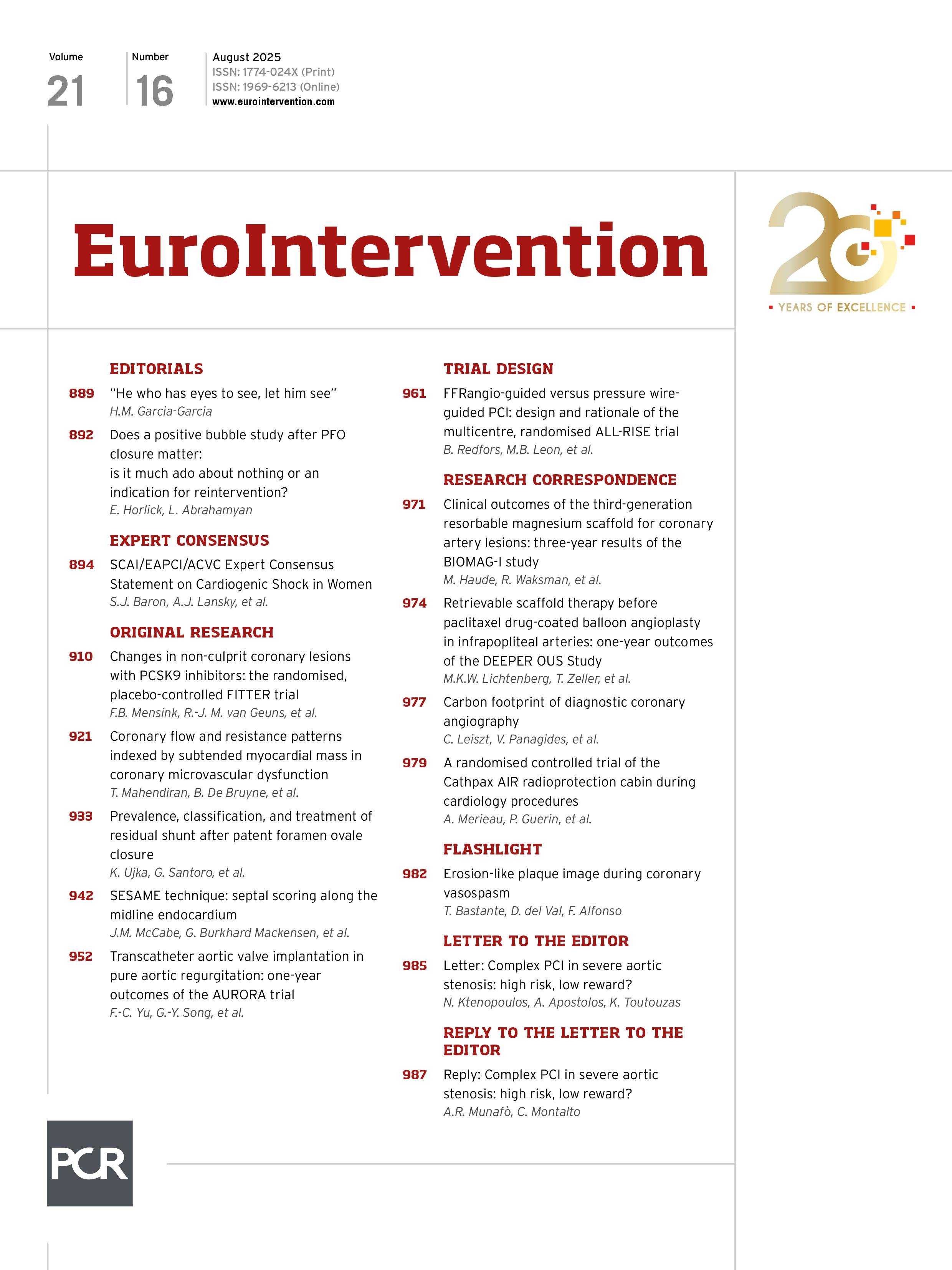Abstract
Background: Transcatheter aortic valve implantation (TAVI) in pure aortic regurgitation (AR) remains challenging because of inadequate anchoring forces. Traditional approaches, which rely solely on virtual annulus oversizing, have demonstrated limited success. We propose a novel anatomical classification system and dual-anchoring theory to optimise the TAVI strategy in patients with pure AR.
Aims: We aimed to evaluate the efficacy and safety of TAVI in pure AR using a novel anatomical classification system and dual-anchoring theory.
Methods: The AURORA trial is a prospective, multicentre, single-arm study conducted across 16 centres in China. Patients with severe pure AR underwent comprehensive anatomical assessment using multidetector computed tomography (CT). Based on the ability to provide adequate anchoring forces (≥10% of oversizing) in three zones (left ventricular outflow tract, anatomical annulus, and ascending aorta), patients were classified into 4 types. Those with anatomical types 1-3 were enrolled and underwent TAVI using the VitaFlow valve system. The primary efficacy endpoint was device success, and the primary safety endpoints included 30-day mortality and major complications.
Results: Among 187 screened patients, 100 patients with suitable anatomy (types 1-3) were enrolled. The mean age was 72.7±7.2 years, and the mean Society of Thoracic Surgeons Predicted Risk of Mortality score was 9.10±5.81%. Device success was achieved in 91% of cases, with no procedural mortality. The new permanent pacemaker implantation rate was 9%. Postprocedural CT analysis in 43 patients revealed that the maximum contact forces were primarily localised between the virtual annulus and the sinotubular junction (83.7% of cases). No device failure occurred in later cases.
Conclusions: The AURORA classification system shows that comprehensive anatomical assessment can lead to favourable outcomes in pure AR using conventional TAVI devices. The low pacemaker implantation rate and the absence of device failure in later cases suggest that optimal anatomical matching may be superior to aggressive oversizing strategies.
Sign up for free!
Join us for free and access thousands of articles from EuroIntervention, as well as presentations, videos, cases from PCRonline.com

